【SaaS Content Marketing】
In a previous blog, we discussed how to construct features on a SaaS website to acquire customers. The next step down the road would be to strengthen the relationship with existing customers by continuously delivering value and help them make the most out of your SaaS product. An effective way is to provide helpful and educational content. This blog discusses the content type and topics created for the target audience by Zapier. Through this, we illustrate how SaaS companies build a relationship with users through content marketing.
SaaS Content Marketing Case study:
SaaS Business – Zapier
Zapier is a SaaS company that creates automation within more than 2,000 digital apps, to simplify the repetitive tasks without complex coding or developers. The simple interface allows almost anyone to control and setup with ease, and have attracted over 3 million people ever since 2011. Their website is well made for both acquiring newcomers and nurturing current customers.
SaaS Content Marketing: Writing to provide value
Learning does not stop with conversion to subscribers. One purpose of providing content is to educate your audience on your SaaS expertise.
SaaS content marketing is about educating your audience, providing them with useful and valuable information. Your subscribers will encounter issues with your service, and it is hard to keep up and reply to them 24/7. There are updates on your service that you want to announce. This is when a centralized resources section would be helpful to act as customer service, a knowledge base to organise all information for them.
1. Guide on using your SaaS service
Your SaaS company website is the first place customers visit when they experience difficulties with the service.
Provide step-by-step instructions on setting up features, tips and use case would help them resolve their problems at their dispense. These guides are likely to help reduce the workload of a customer service team, as they can either look for the content themselves or if the case fits, you can easily refer them to the article instead of writing or explaining the same steps over and over.
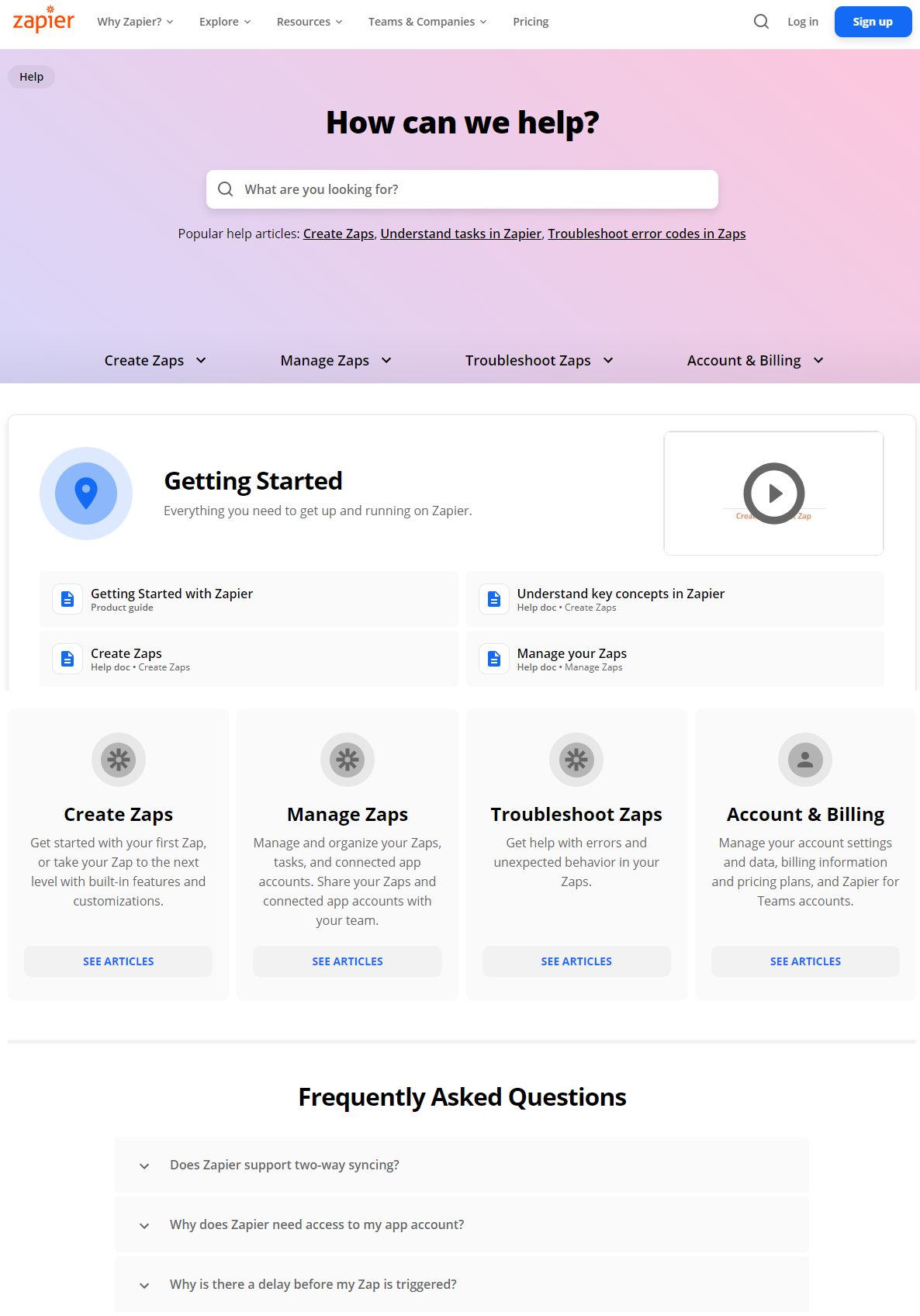
Source: Zapier Website
2. Regular updates on new features
Your subscribers are interested in your service, and would like to know more! Write monthly update on your work, new features on the way and instructions on how to use them fulfills their interests, and allow you to generate quality content marketing materials regularly. You can also choose some commonly asked questions from your visitors and answer them publicly, providing a solution for those who might need help later.
These business-focused topics show your services are always up-to-date, with new things coming in now and then, and that you value customer feedback. Regular updates allow subscribers to expect when there would be news and can help them understand your SaaS service thoroughly. It is a relatively efficient and sustainable way to create a sense of community.
In Zapier’s case, they have a blog section under resources, which includes contents like step by step guides to set up common automations, how to integrate the latest app they are collaborating with, and latest feature updates.

Source: Zapier Website
3. Broad related content topics
However, contents are not limited to tips and guide on using the SaaS service, it can also include the newest technology of the month, explaining common misunderstanding in the industry, several methods or tricks to improve on other related aspects.
Not every piece of content marketing writing has to be directly related to your SaaS product; bombarding the audience with how good and powerful your tool is will lead to fatigue in a short time.
On the other hand, infusing subtle suggestions on how your service can help in specific scenarios give the audience a better chance at resonating with your SaaS product.
On Zapier’s website, they have a blog titled “Why big changes happen when you focus on small improvements”, and talked about how repeating small tasks every day takes up a large portion of your work hours. The blog included subsections like “identify small improvements” and “small things add up to big ones”, to suggest that you can replace these small tasks with automation, which is what Zapier’s selling at the end.
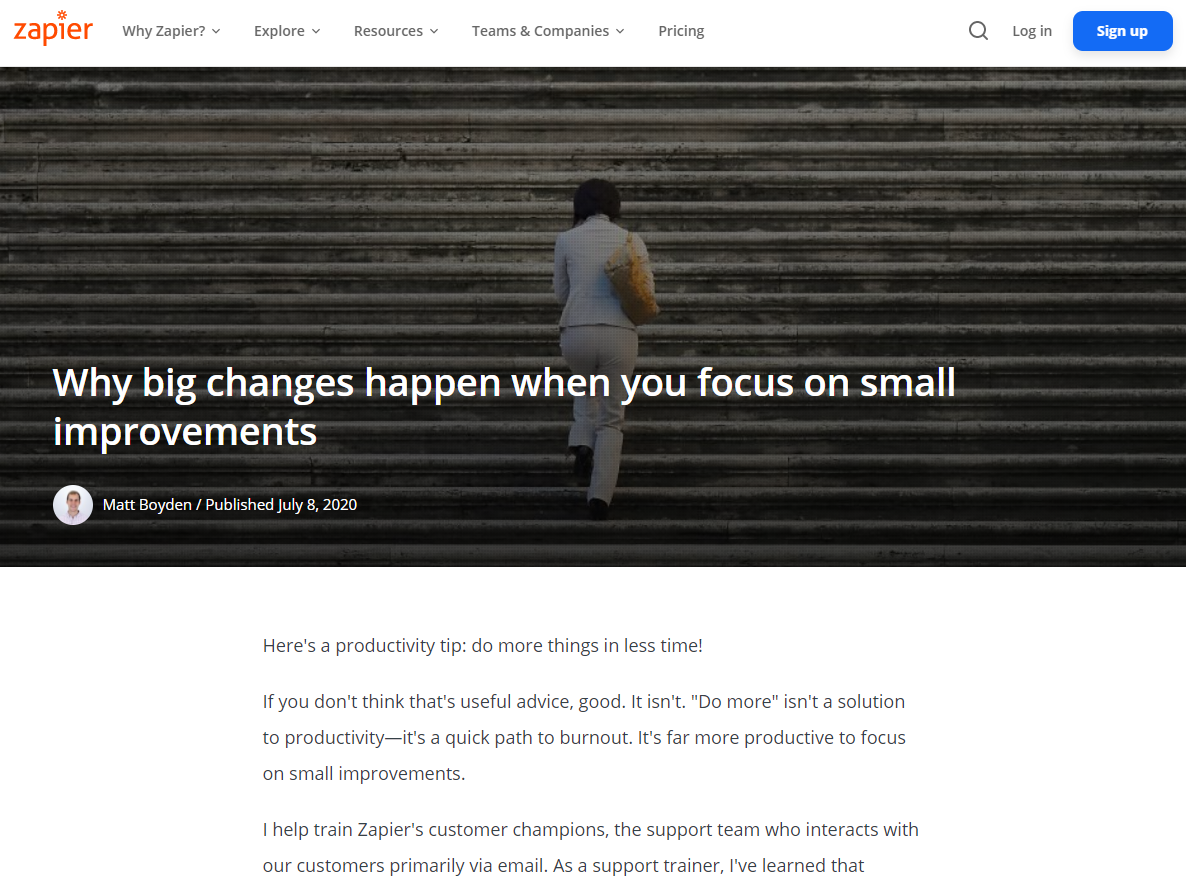
Source: Zapier Website
4. SaaS Glossaries for new audiences
Even though glossaries does not seem like traditional "content marketing materials" but a SaaS company’s service likely involves terminologies and jargons, and it is also likely that your subscribers do not understand them. It is important to make sure that unfamiliar technical terms do not drive your website visitors away. The last thing you want to see is website visitors Googling the terms and end up on your competitor’s website. A well-built glossary list is an opportunity to educate your future and existing users.
If you do not know where to start, take some terms that are brand specific or new ideas from your industry and write down their definition. Check if you are using jargons to explain each another, and give all terms an explanation. Keep the explanations short and precise, update and expand your glossary regularly.
On their website, Zapier set up a page to learn about the key terms used on their apps, which will appear in the guides and instructions also. This would be the first step for customers to get familiar with using the service and understand the guides they are going to read.
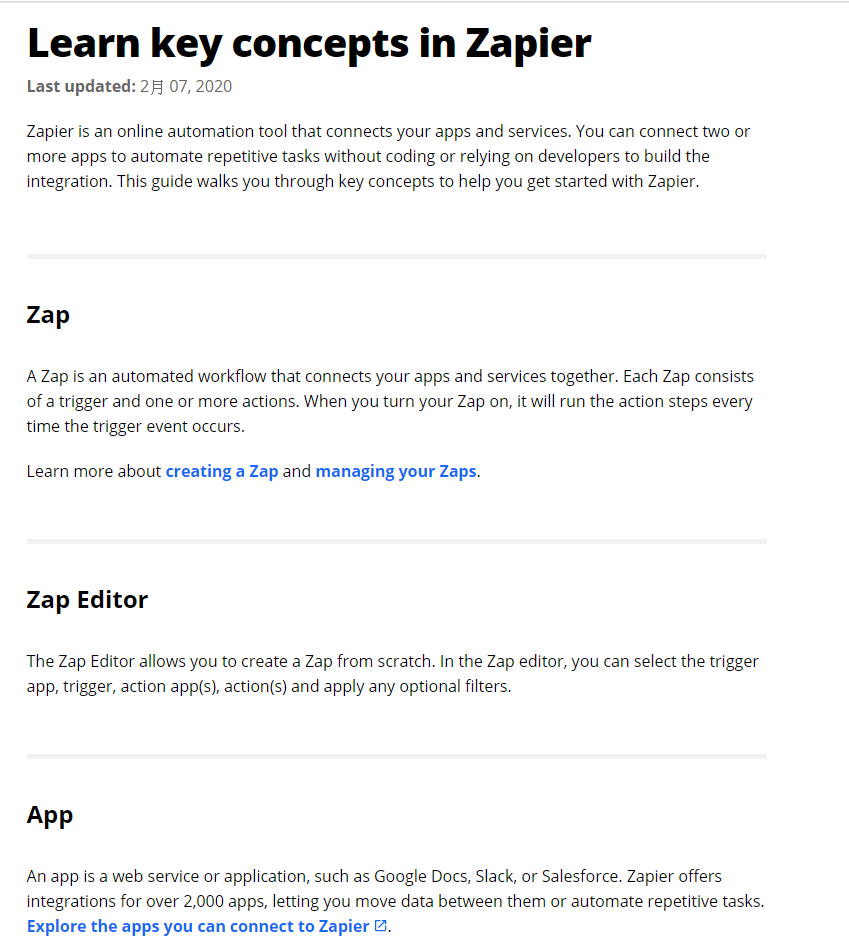
Source: Zapier Website
5. User-generated contents
Generally, customers tend with resonate with user-generated content better, it is easier to relate to those with a similar background. These opinions are perceived as less biased than marketing materials directly from the company, as the opinions showcase a more objective view of a SaaS product.
From company aspect, you can treat this as a demonstration of what your service is capable of. Tailor the content marketing materials by choosing clients who are more into the advanced stage of your service, so more functions are shown and introduced.
Coming from audiences’ perspective, you can create community pages on your website, where users review the features, ask and solve questions. This creates controlled interactions within the customers, and your business can respond to their thoughts: giving thanks to those who appreciate, and helping those who have dissatisfactory experience.
Having transparency on dealing with negative comments not only shows you care about clients’ experience,
but allow those who come later to follow the same step and solve future issues.
For Zapier’s example, they hold online seminars inviting current clients to share their thoughts on the service.

Source: Zapier
SaaS Content Marketing Outside of Website
There are only limited things you can provide on a website. The reality is visitors do not stay to read every page and are unlikely to revisit very often. You want to have constant interaction with them, to stay on top of their mind, and be chosen when they decide they need help. You would like to engage a broad audience on social media platforms, while also curating personalised interactions through emails.
Make good use of Content Materials
Valuable content takes time to prepare and compose. To make the most out of all the hard work, repurpose the written contents, like guide and blog posts into the emails, providing personalised topics
Writings? Infographics? Video?
Every audience is seeking the same contents
but absorbs it in a slightly different way.
Under this concept, you can write all the topics, and present the popular ones in multiple formats: written, infographics, videos, animations, whatever best explains your point. Each format will suit some of your audiences, and you would like to cover all grounds with the contents you already have.
Emails subscriptions to keep in touch
One way to do this is to ask for their email, where you can send them useful and interesting content to keep future and existing customers engaged.
Welcome to the email list: First steps and guidance
First of all, immediately after signing up, a welcome email to introduce them to the list. They introduce general terms, how their service will be able to help, and give suggestions on where to start. You want to motivate them on making small steps and start getting familiar with your brand and start trying out features that they find interesting and helpful.
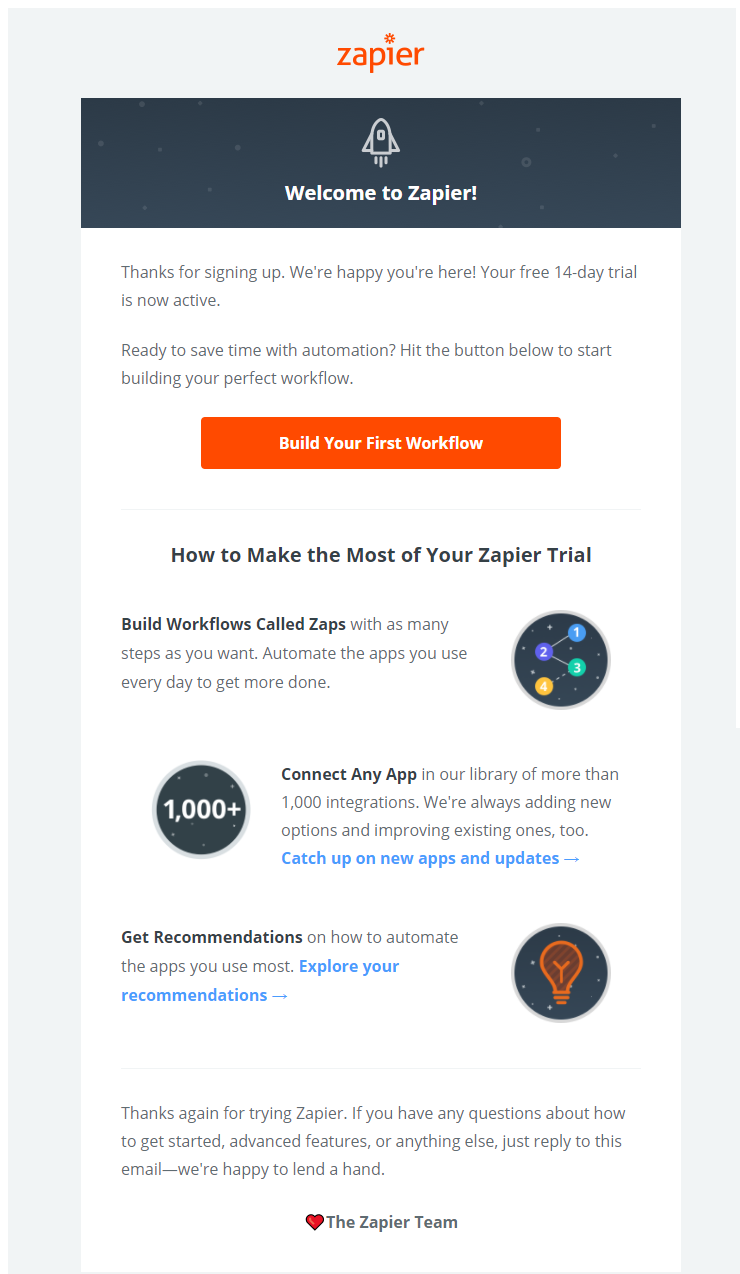
Source: Zapier
A newsletter or themed topics: Latest news and updates
Next down the line, you might get ahold of what topics they are more likely to click on. Learning their habits and interests allow you to send them personalised emails with contents tailored to each subscriber. A regular newsletter update on your newest blog post or feature updates would also be nice for them to catch up quickly!
For our example, Zapier also links to these writings in their weekly newsletter to email subscribers. These emails contain a central theme and selected several blogs related to the topic. The example below is about apps on Zapier and includes 5 blogs listing their app choices on various work aspects.
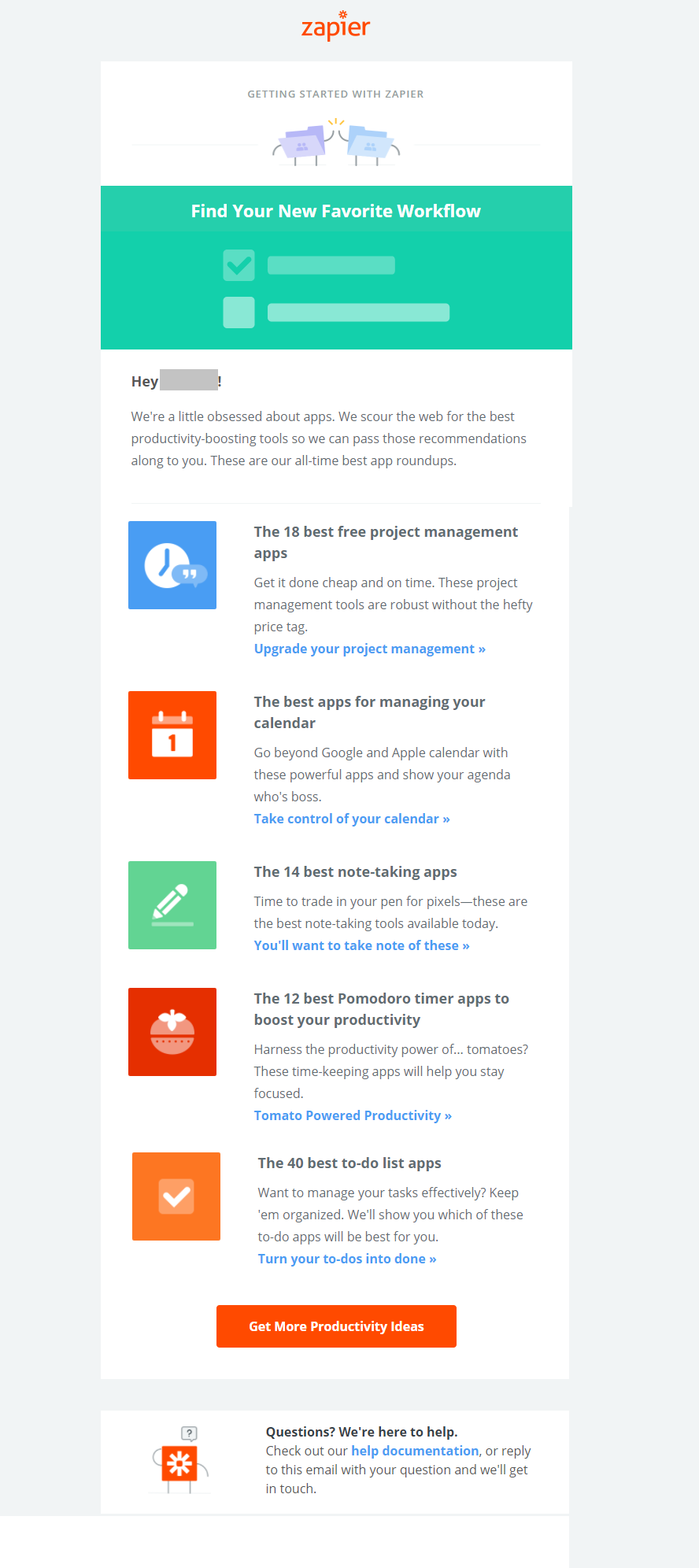
Source: Zapier
Video guides: Step-by-step instructions and demonstrations
Sometimes words do not fully explain your point. The video format is especially helpful for step-by-step instructional contents, where they can follow closely and copy the actions on the corresponding sections. You can make use of previously written guides, and present the same content in video mode, and visitors can choose the ones they can better absorb.
Zapier sent out the below video for their subscribers to follow on-screen to set up the same automation. This helps your visitors to experience operating the background setups and overcoming the technical difficulties.

Source: Zapier
Moreover, since the content are embedded in the email, they can always refer back to this instructional video in their mailbox if they need help on similar issues later.
Social Media Platforms: Approach your audience
For those of your audience that likes to stay on social media platforms, it is nice to step up a profile for your business, so they have more touchpoints with your brand. You can put links to your latest blog posts, photos of recent events, or bite-sized video of service demonstrations. Remember to fit in with the rest of the contents on a social media platform, keeping it casual and light-hearted, and interact with your audience regularly!
For our example, Zapier has a Youtube Channel where they post short videos on introducing the brand and an Instagram page where they share users-generated content like testimonials or condensed content from their blog posts.
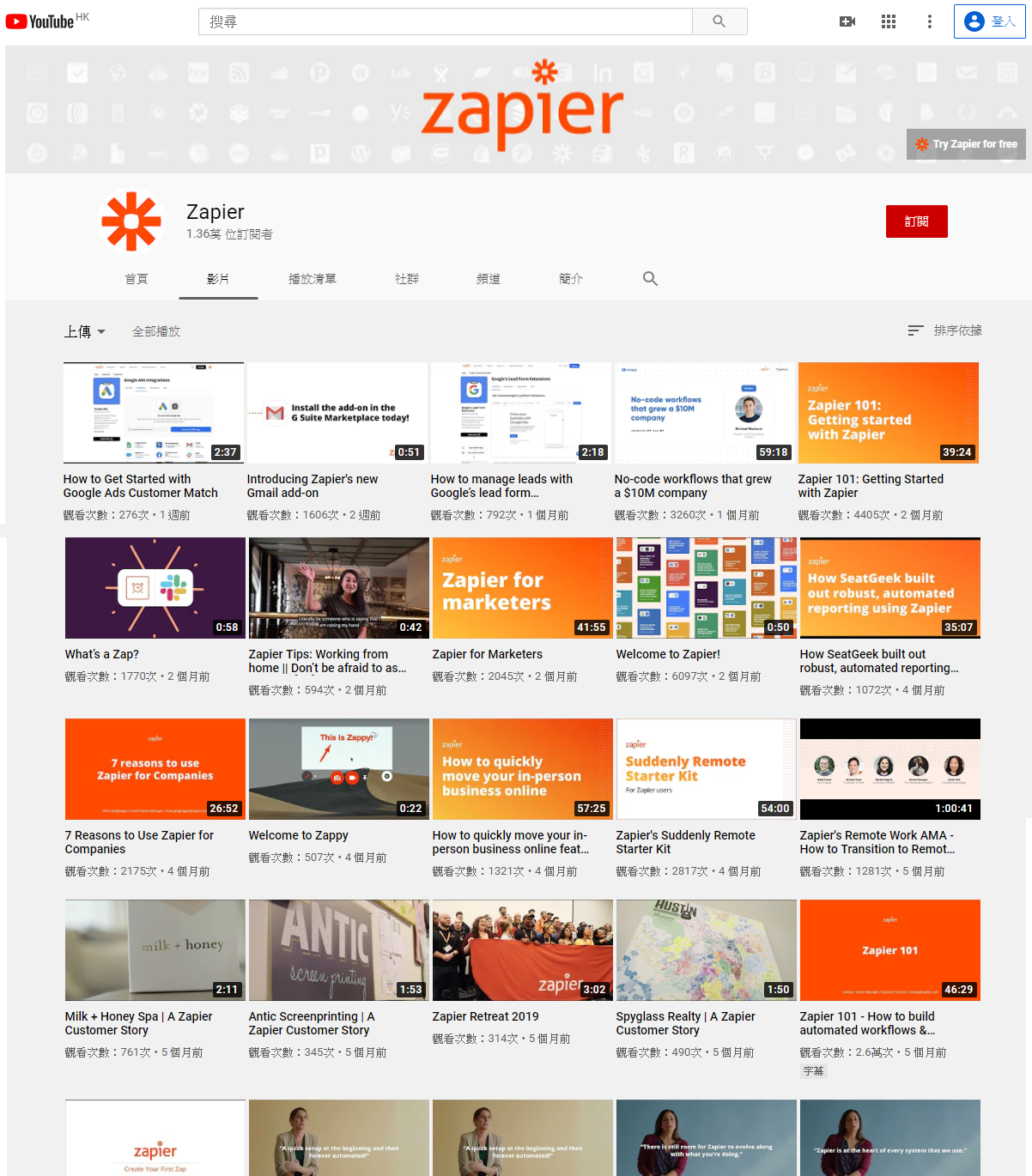
Source: Zapier Youtube Channel

Source: Zapier Instagram Profile
As a side note, for a brand as large as Zapier, there are users community on Facebook, where current users will share their thoughts and help out each other. These group might not be officially organized by Zapier, but having experts from the brand to join and answer questions in the group will build a better brand image.
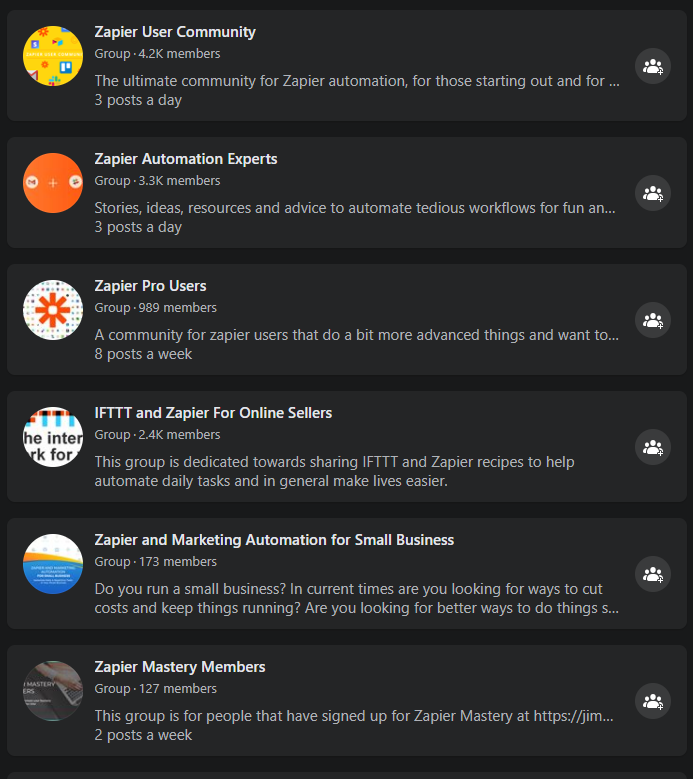
Source: Facebook
E-books: Downloadable Content Marketing
For those who prefer a focused guide, Zapier also provides downloadable e-books. This format acts as an overall manual guide, and allow you to be as long and detailed as you want to be. The in-depth explanations would be useful for those ready to go next step of learning, and customers can save the content for easy access.
We can see from the example that Zapier categorized the books into different purpose, organizing the content in a way that thoroughly explains why and how they should improve on the topic.

Source: Zapier Website
Look for solid grounds
Starting content marketing as a SaaS company might seem overwhelming at first, with all different contents to cover and the various format to approach your audiences. Start your journey on solid grounds you are familiar with: your SaaS functions, what your audience is asking about, how do you previously explain complicated issues? Take some time to dig through previous customer service materials to find useful materials to build on!
Vision One Digital is experienced in Digital Marketing for SME. Drop us a line if you have any questions or issues on the topic!
